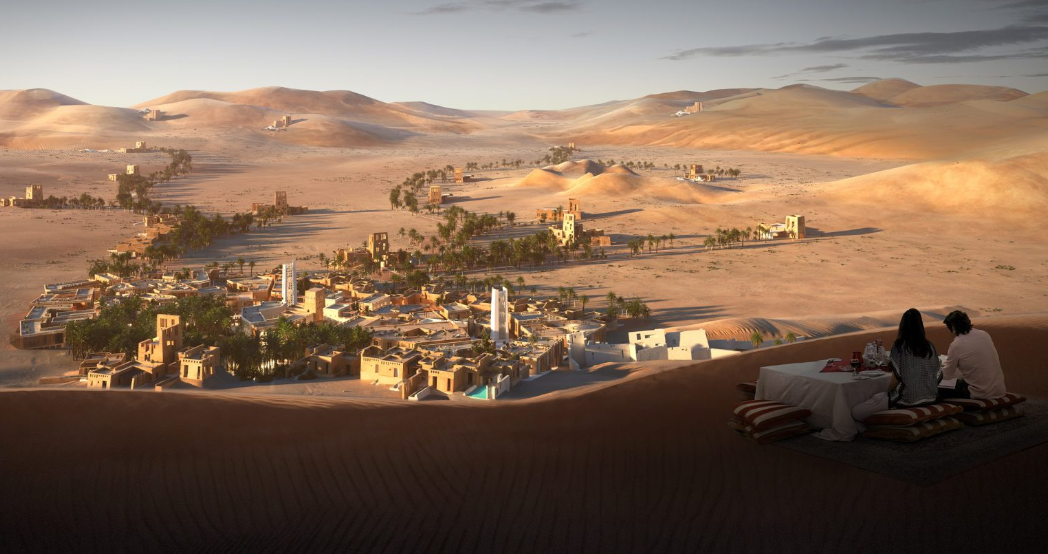Estimated reading time: 3 min
In the ever-evolving world of architecture and interior design, the notion of cultural authenticity in hospitality spaces has gained significant importance. The seamless integration of tradition and innovation in such environments has become a notable characteristic of exceptional design, resonating with global travellers seeking meaningful and immersive experiences. There are extensive challenges and opportunities architects and designers face when creating culturally authentic hospitality spaces, especially when focusing on the delicate balance between honouring local traditions and embracing innovation.
For RMJM, cultural authenticity in hospitality spaces refers to the ability of a design to evoke a sense of place and local identity, reflecting the customs, history, and values of the local community in which it is situated. Moreover, achieving cultural authenticity goes beyond merely incorporating stereotypical elements of a culture; rather, it involves extensive research to ensure an understanding of the essence of the community, its roots, and the daily lives of its people. At the same time, this authenticity should be delivered in a contemporary context, allowing guests to connect with the past while embracing the present.
Because of this, there is a wide variety of challenges that can be faced by teams designing for Cultural Authenticity and as such careful consideration is necessary to ensure a harmonious balance between traditional elements and contemporary design language. While modernity allows for innovation and comfort, tradition anchors the design in its cultural context. Respecting and celebrating cultural heritage is essential, but falling into the trap of cultural stereotypes can lead to inauthentic and insensitive designs. Authenticity demands a nuanced understanding of a culture’s symbols and practices, ensuring that they are thoughtfully and appropriately integrated into the design, as such it is essential to engage in open dialogues with community members to understand their perspectives on authenticity and design. Of course, while the preservation of tradition is vital, innovation now plays a pivotal role in enhancing the contemporary guest experience as well as for keeping hospitality spaces vibrant and relevant. Lishui Gucheng Island 5-Star Resort,Lishui, Zhejiang, China
Lishui Gucheng Island 5-Star Resort,Lishui, Zhejiang, China
Innovation in cultural design can be approached in various ways, such as being used to reinterpret and transform traditional elements, materials, and craftsmanship into contemporary forms. This approach honours the past while inviting fresh perspectives, creating spaces that are both familiar and excitingly new. Additionally, collaborations with local artists and artisans allow for the infusion of authentic, handcrafted elements into the design. This not only supports the local economy but also enriches the space with unique and culturally significant works of art.
RMJM’s Lishui Gucheng Island 5-Star Resort is a stunning example of a hospitality project that has seamlessly fused cultural authenticity with innovative design. Commissioned to masterplan and design a new ultimate 5-star resort development on Gucheng Island, the inspiration embodies a discreet and culturally inspired architecture that blends harmoniously with the lush local landscape.
Drawing on the essential elements of the local historical architecture, the design reinterprets and elaborates the rich fabric of local cultures and traditions that make the region unique. Furthermore, the buildings assemble a coherent statement, externally articulating the masterplan with bold sculptural roofs and solid walls. While internally, local art and craftsmanship have been sourced in order to support the local community and contribute to the overall authenticity of the space. Desert Resort, Empty quarter, Saudi Arabia
Desert Resort, Empty quarter, Saudi Arabia
Additional key ways in which architects and designers can harmoniously fuse traditional elements with innovation is by thoughtfully utilising technology. It is essential that technology is integrated into cultural designs with caution to avoid overshadowing authentic experiences, but it can be employed to enhance storytelling, create interactive exhibits, or facilitate communication, all while preserving the core cultural essence, as seen at Desert Resort, located in a region rich in cultural heritage.
Located in Empty quarter, Saudi Arabia, the project masterfully combines traditional architectural elements, such as vernacular building techniques and locally sourced materials, with cutting-edge design concepts. The resort’s interior showcases a careful selection of traditional aspects, encouraging guests to immerse themselves in the region’s artistic legacy- supported by highly knowledgeable staff from the local area. Alongside this, the resort seamlessly incorporates technology to enhance guest experiences, including exhibits explaining the cultural significance of certain design elements, augmented reality tours of nearby historical sites, and a digital concierge service for personalised recommendations.
All in all, designing for cultural authenticity in hospitality spaces is an intricate yet rewarding endeavour. Achieving the delicate balance between tradition and innovation requires a deep understanding of the culture, careful curation of design elements, and a commitment to sustainability and ethical practices. When executed thoughtfully, culturally authentic hospitality spaces have the power to foster meaningful connections, bridge cultural gaps, and leave a lasting impression on guests from around the world. By honouring the past while embracing the future, architects and designers can create environments that celebrate and share the rich tapestry of human heritage in a contemporary context.


